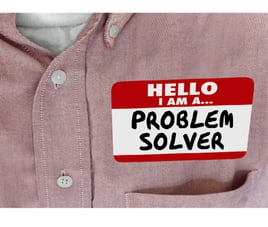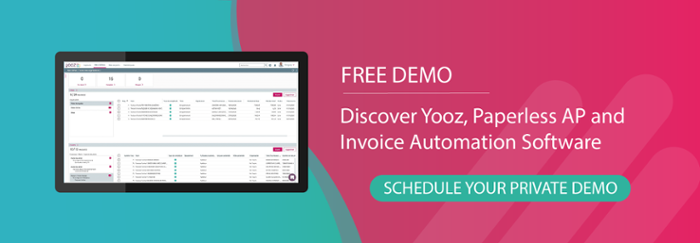Retailers have a lot on their plate just to keep a business going. From ensuring a constant customer flow, clean environment, and stocked shelves to everything in between, the last thing they want to worry about is constantly ensuring that vendors and suppliers are all paid on time. However, late payments could mean a complete halt to stock deliveries and lead to lost sales, unhappy customers, and company failure.
For these reasons and more, doing a good job keeping track of Accounts Payable (AP) in real-time is an essential requirement for the smooth, day-to-day running of any retail business. That is, if they want to remain competitive and make money.
Enter Accounts Payable automation. By taking the tedious, monotonous, and repetitive steps out of the invoice and payment process, retailers can free up time to focus on other tasks which grow and sustain the business. Not only that, but thanks to automatic reminders (and even auto payment) suppliers are always paid on time and for the right amount.
The result? Retailers enjoy better vendor relationships while gaining metrics and insight that can help drive better financial decision-making, both key when trying to battle ongoing inflationary pressure and a recession.

What Accounts Payable challenges are retailers currently facing?
While the cloud makes automation easily accessible to businesses of any size, there can still be obstacles. In particular, for those retailers who have yet to make the move to and end-to-end Accounts Payable automation platform, there are larger challenges including:
1. Human error
Humans are only well, human at the end of the day, and although we have a lot of great characteristics, we are prone to making the odd mistake every now and then. For example, with so many different invoices, order numbers, and suppliers to match up, things can quickly become unsustainable.
This is especially true for large retailers with several different stores, multiple locations, and outlets. Mistakes in the finance department can be costly, and retailers must be able to rely on a solution that will consistently reduce the risk of approving duplicate payments, erroneous payments, or fraudulent invoices.
2. Late payments
Linked to the problem of human errors throughout the invoice process is the issue of late payments, which remains one of the most common issues for retailers. Although larger retail and e-commerce stores might be able to draw on a bigger pool of cash flow, it’s the smaller retailers that get hit the hardest when payments aren’t paid on time. Not only that, but late payments could have a severe knock-on effect lower down the supply chain for other vendors and independent suppliers, as well as carrying potentially heavy fines.
3. Lack of real-time data
Although retailers might be collecting and analysing data on consumer spending habits, shopping patterns, and other service industry trends, a lack of insight into the finance function can leave them open to risk. Without real-time data in the Accounts Payable process, retailers simply don’t know what payments are due to come out on a day-to-day basis which could have a long-term effect on cash flow, forecasting, and ultimately the growth of the business.
How Accounts Payable automation can help solve retailers’ problems
By moving away from manual processes and embracing end-to-end automated Accounts Payable, retailers can overcome all of the above challenges and many more. Rather than relying on human intervention at every step of the process, retail Accounts Payable teams can enjoy a fully automated system that is faster, more accurate, and more secure.
Taking the issue of fraudulent invoices as an example, end-to-end automation means financial documents can be quickly matched with corresponding purchase orders and receipts to ensure 100% accuracy at the beginning of the invoice process. Also, by automating the repetitive and monotonous processes such as data entry and scanning paper invoices, staff are increasingly challenged and motivated by diverse tasks that allow them more freedom and growth in their roles.
Late payments also become a thing of the past. Automated workflows dramatically cut time spent on the approval and management process of invoices, with the software automatically sorting those invoices which need more attention and the cloud allowing for around-the-clock approval from anywhere through an easy-to-use interface. The payments themselves can be scheduled for preferred times or go out instantly depending on supplier needs and preferences. With all this be accomplished, finance leaders can feel confident that the payments approved are all accounted for.
Best of all, retailers stand to gain large amounts of actionable data that can be used to improve the entire company (not just the finance department) and in turn, fuel business growth. For example, by understanding where regular payments are being made, retailers can negotiate better payment terms or observe where unnecessary spending is taking place.
By reviewing real-time information, retailers can make more informed decisions based on accurate, up-to-date information. This is also helpful when having to react to sudden changes in events and when dealing with other factors such as inflation.
What are some other benefits for retailers?
Not only does moving to end-to-end automation help retailers overcome daily challenges like those mentioned above, but there are also additional benefits as well.
Significant cost savings can be gained just by improving the overall productivity and efficiency of the finance function. These include a reduction in cost-per-invoice processed or savings gained through eliminating other operational hard costs such as paper and filing. Plus, the more invoices that retailers receive, the faster they will see a return on their investment.
Security and compliance are also improved with accounts payable automation. Submitting tax records and undergoing an audit can be a stressful time as a retailer, so it’s important that you’re able to record and collect accurate financial information. In fact, thanks to the Making Tax Digital (MTD) initiative. By utilising accounts payable automation, you can be assured that all relevant documents are digitally stored for easy access and safeguarded against unauthorised access. Moving to a cloud platform also means you can read, review, and improve information no matter where you are in the world.
Improvement in supplier relationships is certainly a key benefit. Everyone is happier when they’re paid on time, so by putting a mechanism in place to ensure this happens enhances those associations. What’s more, you can also start to negotiate better payment terms for being a long-term partner and even claim discounts for paying invoices before the scheduled date.
So to conclude...
While retailers are investing heavily in new technology such as point-of-sale systems, stock management tools, and other software integrations, the finance function must not be overlooked. Putting in place a fluid Accounts Payable process is an important step in building a successful business, and there’s nothing that can make retailers more competitive than automating manual tasks that left along only create friction and bottlenecks.







